Introduction
When Nikon announced the D600 in the days leading up to Photokina 2012, the $2,000 full frame 24-mix camera looked destined to become one the most popular models in the firm’s line up. Twelve months later, the camera has been replaced by the D610, a slightly revamped model that bears all of the original’s specification plus a few new minor features, including a faster continuous framing rate along with a ‘quiet’ burst shooting option.
Naturally, the new model retains the full-frame 24-Mpix CMOS sensor of the original with ISO 100-6400 (expandable to ISO 50-25,600 equivalent) sensitivity and the 39-point AF system with 9 cross-type AF points and familiar well-made, part alloy, part plastic outer shell. The D610 also retains the same video capabilities as its predecessor including Full HD video clips at 1080p and with the option of 30/25/24fps and mono sound with a jack for headphone monitoring.
Key specifications:
- 24-Mpix Full-frame CMOS sensor (10-Mpix DX-format crop mode)
- ISO 100-6400 (expandable to ISO 50-25,600 equivalent)
- Maximum 6fps burst mode (up from 5.5fps)
- Additional quiet burst mode at 3 fps
- 39-point AF system with 9 cross-type AF points (7 with f/8 sensitivity)
- Revamped auto white balance system
- Wireless flash control
- 3.2-inch (921k-dot) LCD screen
- Dual SD card slots
- 1080p 30/25/24fps video
- Uncompressed video recording via HDMI
With a DxOMark Sensor score of 94 points the image quality of the D610 is impressive and is the third best sensor measured using our system.
It’s just narrowly behind the firm’s 36Mpix D800 and D800E models but achieves the same overall score as its predecessor. This suggests that sensor is the same unit found in the D600.
Portrait (Color Depth): 25.1 bits.
In joint fifth place overall in our Portrait scores; the D610 achieves a very high score approaching that of the Phase One P40 in our database. Although that and the P65+ aren’t the latest models from the firm, it’s an excellent result for the D610 (and the previous D600).
Dynamic Range (Landscape score): 14.4 EV
In terms of dynamic range, the D610 ranks in joint first place alongside the Nikon D800 with a DR of 14.4 EVs. Nikon occupies four of the top five positions in this category, however all the cameras listed adopt Sony-sourced sensors. Incidentally, the D610 is marginally ahead of the RX1, which is believed to adopt either the same or a very similar sensor. The scores appear to bear that out
Lowlight ISO: 2925
The Nikon D610 ranks in fifth place in the top five for low-light ISO scores in our database, but is still very close in real-world terms to the others. That’s especially true when you remove the Nikon D3s from the top spot, as it’s no longer made, and difficult to find new (if it can at all).
Nikon D610 vs Nikon D600:
Against its predecessor, the D600, the results reveal only a marginal variation (within testing tolerances), suggesting the D610 uses the same sensor and imaging pipeline. If the problems of dust and oil residue on the sensor have been solved, this new model would make an excellent choice and has one of the best ‘bang per buck’ on the market currently. (However, the recently announced Sony A7 should also be a strong competitor).
Nikon D610 vs Canon EOS 6D
Compared to the rival full-frame Canon EOS 6D, the Nikon sensor is quite clearly ahead in overall image quality stakes and is a good example of the gap between sensor technologies. In good lighting conditions, both dynamic range and color depth are significantly higher with the Nikon D610. But in low light, the differences would be far less pronounced. The Nikon would be a good option for anyone looking to use it for landscape work and HDR imaging.
Nikon D610 vs Sony SLT A99
Although Sony may believe the high-grade SLT Alpha 99 is competing with the likes of the Nikon D800 and Canon EOS 5D Mk III (which it does on build quality and price), in reality it’s much more likely to be compared with the Nikon D610. And this is especially true, given the similarity of pixel count and provenance of the sensor. In our tests the D610 outperformed it overall. But, the difference in image quality, specifically regarding the lower Low Light score, can be mostly attributed to the SLT mirror in the light-path of the A99 sensor.
Although we can’t comment on whether the D610 addresses the issue of dust and oil deposits found on the original model, the new camera has some improved features, including a new shutter mechanism, which sounds promising. Along with that, the D610 offers all the performance of the original D600. While the original is available discounted at $1699, saving around $300 on the body of the D610, the new model is still excellent value when compared to rival offerings.


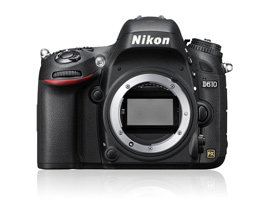



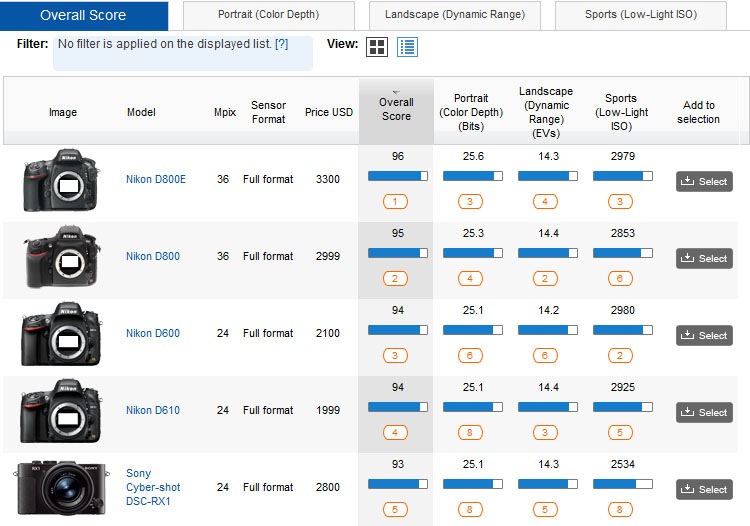
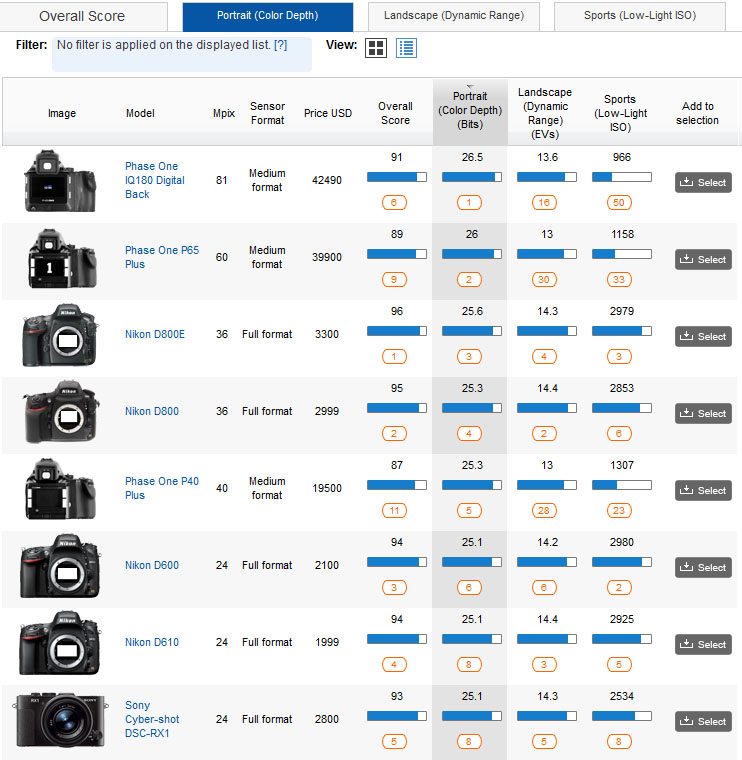
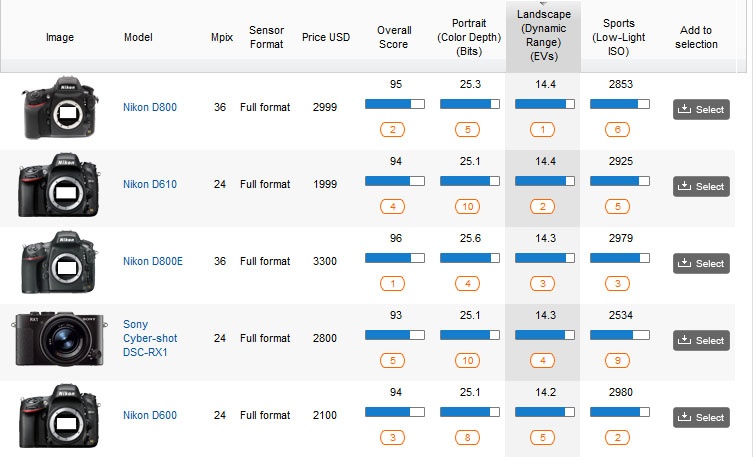
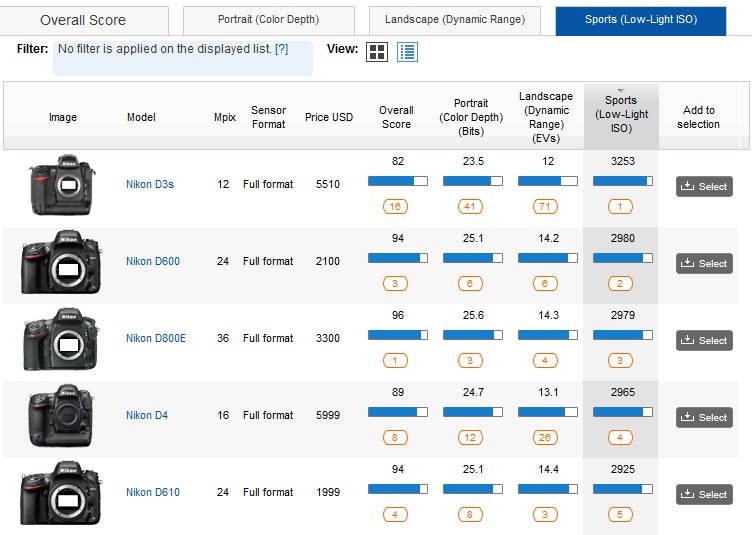
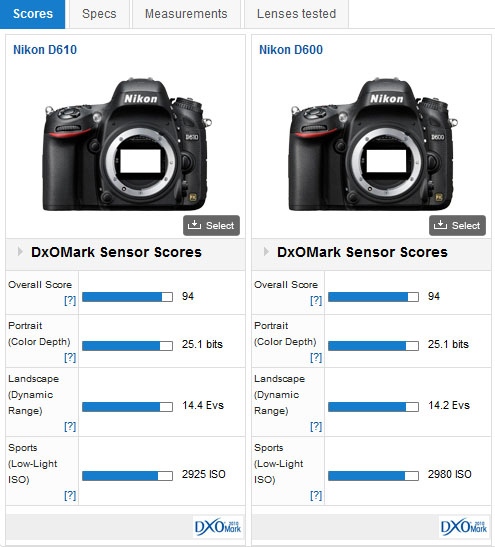
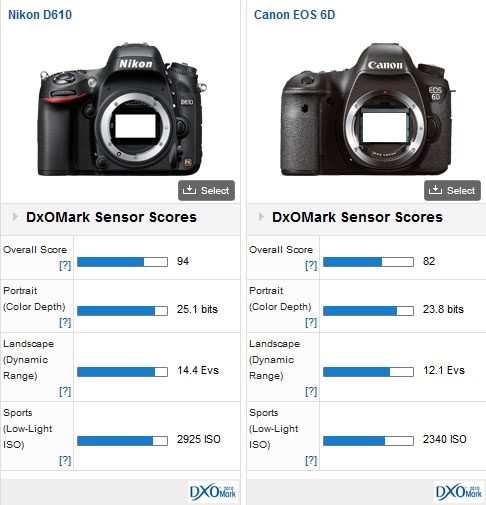
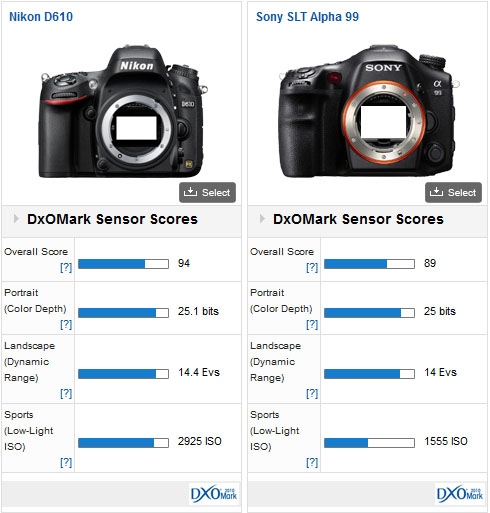
DXOMARK encourages its readers to share comments on the articles. To read or post comments, Disqus cookies are required. Change your Cookies Preferences and read more about our Comment Policy.